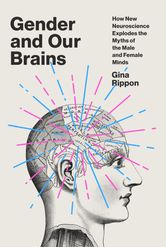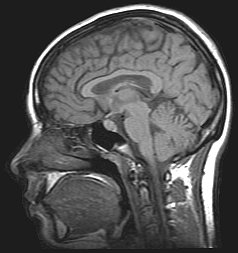The anatomy of bias…
Author: Gina Rippon
 Boys and girls are different. It’s one of the more obvious observations that one could make about the human race. But why is that the case? And how different are they really? Even with the most advanced 21st century technology available, these are extraordinarily difficult questions to answer. In Gender and Our Brains, British neuroscientist Gina Rippon presents a remarkable exploration of the science behind what makes girls and boys – and women and men – into the people they are. It’s not nearly as clear cut – pink and blue – as one might think.
Boys and girls are different. It’s one of the more obvious observations that one could make about the human race. But why is that the case? And how different are they really? Even with the most advanced 21st century technology available, these are extraordinarily difficult questions to answer. In Gender and Our Brains, British neuroscientist Gina Rippon presents a remarkable exploration of the science behind what makes girls and boys – and women and men – into the people they are. It’s not nearly as clear cut – pink and blue – as one might think.
From the earliest days of neuroanatomy, experts have tried to explain the differences between males and females. Clearly, behavior originates in the brain, so the assumption was that there must be structural differences among the some 86 billion neurons that make up the typical human brain that explain the behavioral differences between the genders. But search as they might, they never found one. Despite this failure, this assumption has continued to prove remarkably durable over the centuries.
In a consistently conversational tone, Rippon explores much of this history, revealing how stubbornly gender bias has permeated neurological science. From the most rudimentary early skull measurements to the current heyday of functional MRI, scientists have measured, assayed, dissected and tested countless brains in an effort to determine why girls like flowers and boys like trucks. Surely, an explanation must be hiding in there somewhere.
Exhaustively combing through vast numbers of studies – and sharing a lot of fun details about how psychologists unmask the brain’s many secrets along the way – Rippon eventually reveals that our brains really aren’t gendered after all. Maybe not even a little bit. But our life experiences are gendered from the very first moment. And that makes all the difference. It’s a rather astounding premise, but the author’s argument is rock solid and makes for very enlightening reading.
But there’s another angle to this chronicle that I also found interesting. Rippon’s work also serves as a detailed guidebook to scientific failure. If scientists are so deeply immersed in society’s overpowering biases, then even the most objective attempts at discovery are bound to be warped and confused. Copernicus presented his heliocentric model of the universe in 1543, but it’s not like people hadn’t been trying to solve the mystery of solar system for thousands of years prior. Observers were so completely blinded by the obvious movements of the moon and sun around the earth that anything to the contrary wasn’t even seriously considered. While it’s still early in the going, the current gender revolution could prove to be equally ground breaking.
I studied neuroanatomy in school (quite a few) years ago, but while I didn’t realize it at the time, one thing that was missing in our lectures was any suggestion of where the girl and boy parts of the brain were located. In hindsight – and certainly after reading Gender and Our Brains – I’ve come to the realization that the concept of male and female brain parts makes about as much sense as the idea of male and female kidneys. And while that’s interesting all on its own, it’s crucial to recognize the significance that this modern and evidence based approach to gender has on society around us. Rippon doesn’t hesitate to do that throughout this important work, repeatedly encouraging everyone to shed their equally ubiquitous and tenacious stereotypes as we enter a brave new world of gender enlightenment. Highly recommended.
— D. Driftless
Check out Dave’s reviews of other books about the brain: The Tale of the Dueling Neurosurgeons / Leonardo’s Brain
[AMAZONPRODUCTS asin=”1524747025″]
- Best Non-Fiction of 2016 - February 1, 2017
- Little Free Library Series — Savannah - May 22, 2015
- Little Free Library Series — Wyoming - November 30, 2014


